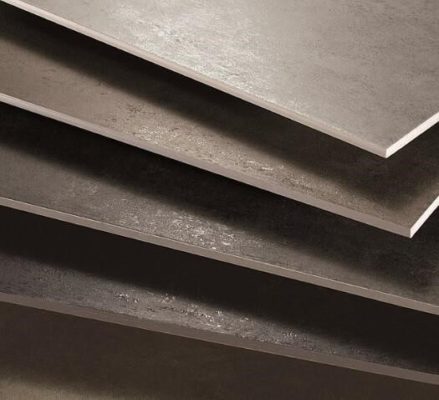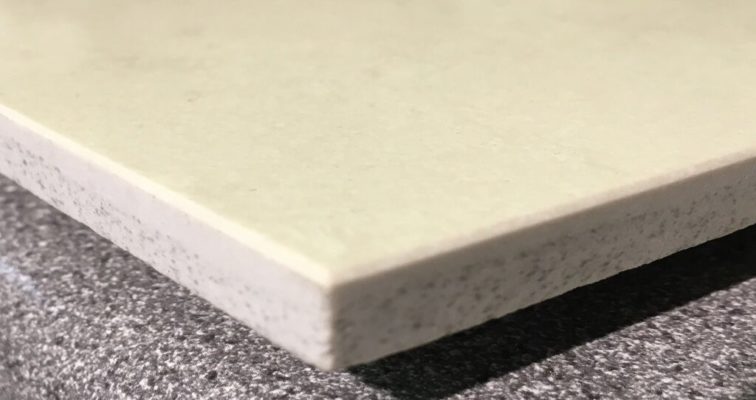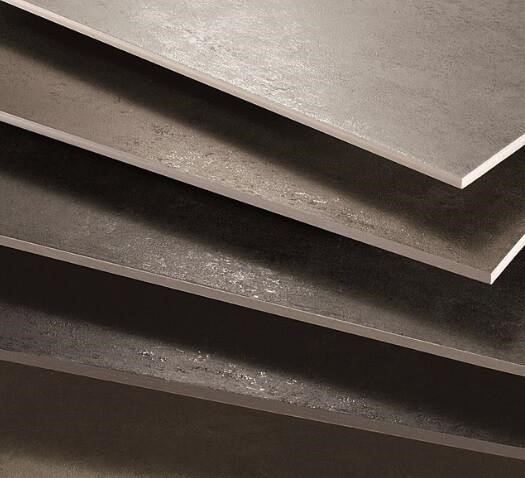No products in the cart.
How To
What is a Rectified tile ?

What is a Rectified Tile?

Do you seek the ultimate in a tiled floor or wall? Where the grout gaps are so narrow it appears there is only one large uninterrupted seamless surface, absolutely level and flat?
Then you must treat yourself to rectified tiles!
A rectified floor tile is one whose edges are perfectly vertical with respect to its surface. This is a result of precise machining of a regular unrectified tile, so that each of the four sides will be at a 90° angle to the top and bottom faces of the tile. This machining is performed on a regular tile that has already been fully produced.

The precise edge of rectified tiles
The advantage of this is that every tile in a batch will have exactly the same dimensions. This differs from regular tiles, where there is an acceptable size tolerance in both width and length between the largest and smallest tile within the batch.
Rectified tiles, when installed, can produce a clean and seamless look. The tiles, all being of the exact same size, can be laid very tightly together, with a grout joint of only 1.5 mm in thickness. This is the recommended minimum as there needs to be some scope for expansion, the moisture from the adhesive used during installation needs to escape, and in general the building needs to “breathe”.
Note however that rectified floor tiles ideally need to be fitted to a substrate that is as smooth and as level as possible. Any attempt to fit these products over a surface that is undulating will result in uneven joint gaps in many places, as the tiles cannot “stretch” to cover the extra area caused by a bump or a hollow. Under these circumstances, aside from impacting upon the visual appearance of the floor with grout joints of varying thickness, very often lips can be caused where the edge of one tile is higher than the next one. This can lead to damage if anything is ever dragged across the floor, and it catches on the lip. As a rule of thumb, you should be able to slide a penny across the floor without it being deflected upwards as it crosses a joint.

The sleek minimalist appeal of rectified tiles
Therefore it is best to tile onto building board, over a self-levelling screed, or a power-floated concrete screed. Many tilers now use a “clip levelling system” as they lay tiles. This system uses a series of wedges and hooks to ensure that the surfaces of tiles adjacent to each other are perfectly level with each other.
You might notice in the image above that the tiles have perfectly squared sides, and that the coloured glaze comes right to the very edge. With unglazed tiles, however, the practice is to machine a very small bevel or chamfer where the surface meets the edge. This is in order to minimise the risk of chipping of the exposed edge, which is not protected by a tough glazed.

Bevelled Edge of Rectified Unglazed Porcelain
Production Process for Rectified Tiles
Tiles are produced, mainly from clay, which is fired in kilns at exceptionally high temperatures. As the tiles pass down the line, into the kiln, they are all of uniform size. But they do not emerge this way at the other end. This is due to a combination of both variations in the moisture content of the clay, and discrepancies of temperature within the kiln itself.
When the tiles have cooled, there can be a large calibre difference between the very largest ones and the smallest ones, which, when installed together on the same floor will lead to problems with the width of the grout joints. There can also be warpage of individual tiles themselves.
The only way around, when tiling, it is to make all the joints very wide, so they can accommodate every tile in the batch. Note that tiles are graded into different batches depending on their size, but even with a single batch, there will be a level of tolerance.
By rectifying the tile, this problem is sidestepped. An automated grinding machine is used to cut off the edges of the tiles so that every tile is exactly the same width and length, (not unlike cutting the crust off slices of bread).
To Wrap Up
Rectified tiles are a perfect recipe for a sleek, seamless, minimalist feel in your home. The tighter grout joints are crucial to this look. However, you’ll need a very even substrate to ensure the perfect, flush finish. And expect to pay a small premium for these tiles.

